Share this link via
Or copy link
Below are navigation links that will take you to the main text and navigation menus.
26,551 first names, 70,620 last names, 333,585 kanji variations.
one of the best Japanese name search tools for your baby!

Image by: Sazae-san comic 1 © Machiko Hasegawa, Asahi Shimbun publications Inc
Contents
Sazae-san a story written by Machiko Hasegawa, is the longest-running anime series in Japan featuring a typical Japanese life. The Isono family consists of 3 generations living under one roof which was quite common back then. The family includes the main character Sazae, her parents, her 2 siblings, her husband, and her young son. Each episode is independently plotted and it’s mainly an interaction between the family members and friends around them.
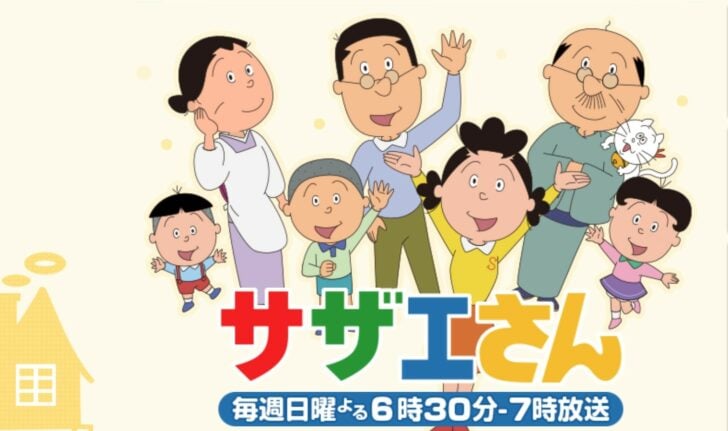
Image by: Sazae-san official website © Machiko Hasegawa © Fuji Television Network, Inc.
The whole series is a collection of individual episodes about Sazae’s family, this is why the title is called Sazae-san. The “san” at the end of the name is used to address a person as “Mr”, “Mrs” or “Ms” in a polite way.
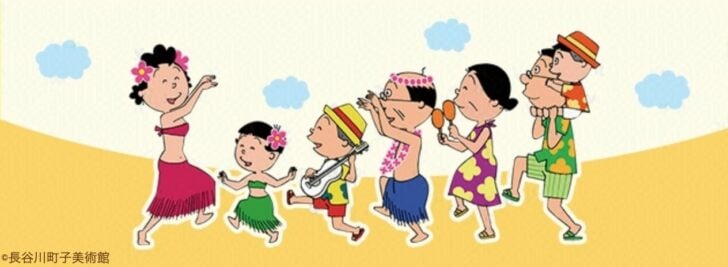
Image by: Sazae-san official website © Machiko Hasegawa, Machiko Hasegawa museum © Fuji Television Network, Inc.
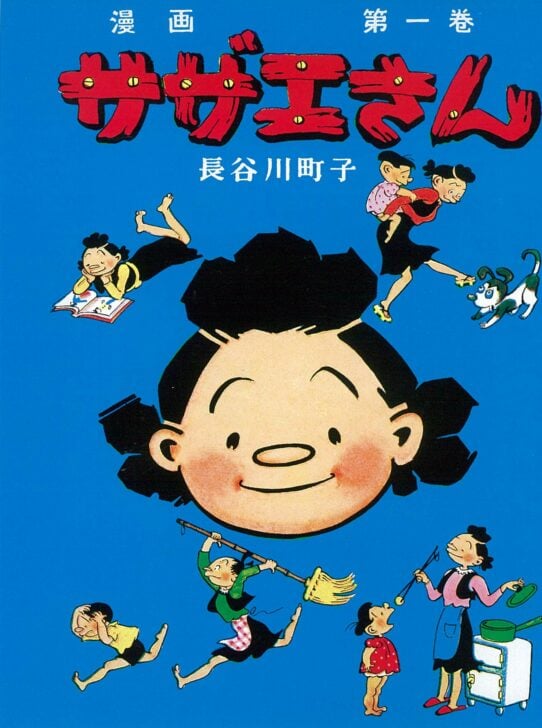
Image by: Sazae-san comic 1 © Machiko Hasegawa, Asahi Shimbun publications Inc
In Japanese culture, names have significant meanings that are supposed to represent you as a person. Names can be expressed in hiragana, katakana, and kanji. Most characters from Sazae-san are somehow related to the ocean. Let’s find out the meanings of Sazae’s family members!

Image by: Sazae-san official website © Machiko Hasegawa © Fuji Television Network, Inc.
“Sazae”(サザエ), the main character of this series. Sazae means Turban shell. She is a little clumsy but a cheerful housewife and she is famous for her unique hairstyle.

Image by: Sazae-san official website © Machiko Hasegawa © Fuji Television Network, Inc.
Masuo is Sazae’s husband and resides in the Isono family’s house. “Masu”(マス) means trout, and “O”(オ) is commonly used for the end of male names. Masuo is a friendly husband and dad.

Image by: Sazae-san official website © Machiko Hasegawa © Fuji Television Network, Inc.
Namihei(波平). “Nami”(波) means wave and “Hei”(平) is flat. “Namihei” is strict and grumpy. He is a typical Japanese grandfather and is Sazae, Katsuo, and Wakame’s father.

Image by: Sazae-san official website © Machiko Hasegawa © Fuji Television Network, Inc.
“Fune”(フネ) is the kind and caring mother of Sazae, Katsuo, and Wakame. “Fune”(フネ) simply means ship. Even though there is an actual kanji for Fune (Which is 船) the writer of this series decided not to write Fune’s name in kanji but instead in katakana.

Image by: Sazae-san official website © Machiko Hasegawa © Fuji Television Network, Inc.
“Katsuo”(カツオ) means bonito fish. He is the cheeky younger brother of Sazae and he often gets into trouble for his mischief. Many people get confused because of his size. Since he is so small people mistake him as Sazae’s son instead of her younger brother.

Image by: Sazae-san official website © Machiko Hasegawa © Fuji Television Network, Inc.
“Wakame”(ワカメ) is the kind and gentle younger sister of Sazae. Like her brother “Katsuo” people often mistake her as Sazae’s daughter instead of her younger sister.

Image by: Sazae-san official website © Machiko Hasegawa © Fuji Television Network, Inc.
The “Tara”(タラ) means cod and the “O”(オ) is commonly used at the end of male names like for example his father whose name is “Masuo”. He is the little son of Sazae and Masuo.
Here are some useful phrases from Sazae-san you can start using today!
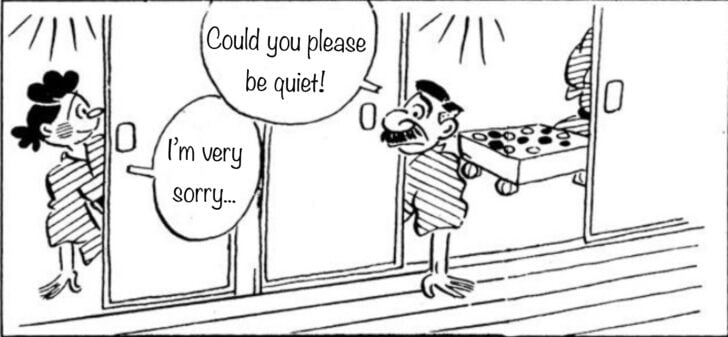
Image by: Sazae-san comic 10 © Machiko Hasegawa, Asahi Shimbun publications Inc
Asking someone to be quiet can be tricky sometimes. This is a polite way to ask someone to quiet down, on the other hand, you can say “sumimasen” when you want to apologize.
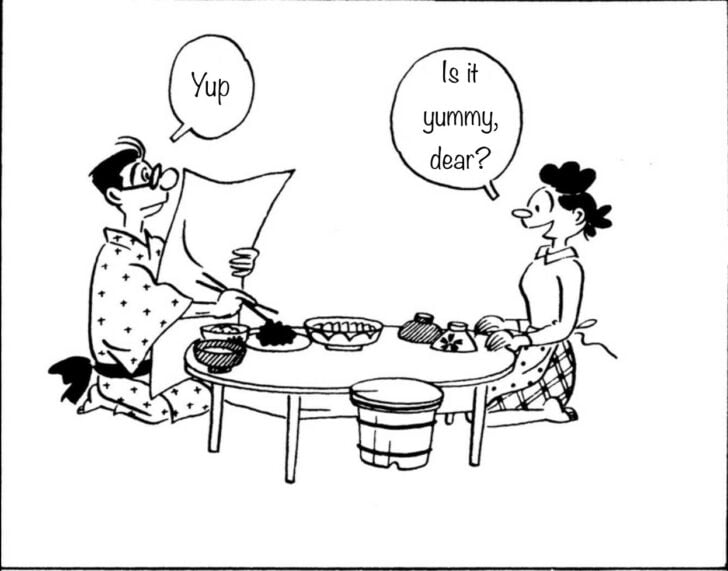
Image by: Sazae-san comic 9 © Machiko Hasegawa, Asahi Shimbun publications Inc
You use the word “anata” which means Dear when you address your husband. “Oishii” means yummy, and you can also use it when you want to know if something is yummy. “Un” is a casual way to say yes or yup!
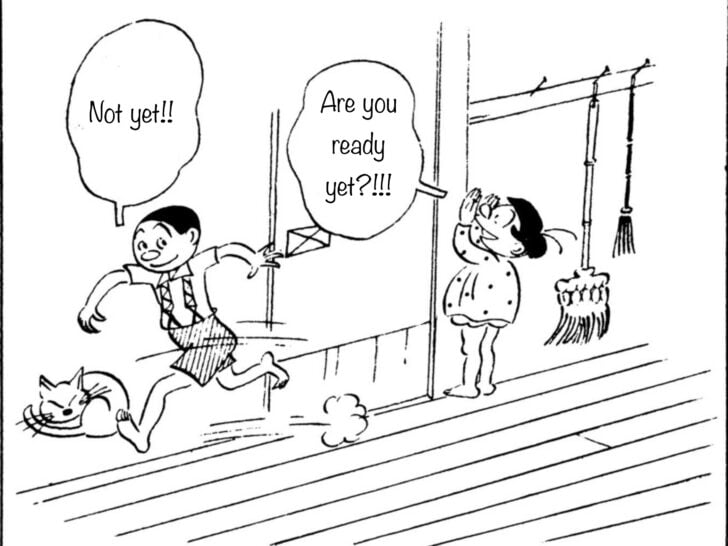
Image by: Sazae-san comic 9 © Machiko Hasegawa, Asahi Shimbun publications Inc
Have you heard kids using these phrases? They are definitely playing hide and seek. You use “Mou iikai?” when you want to ask if you are ready or not, “Mada dayo” means not quite yet. In case you are ready, call out “mou iiyo”!
Sort by: Most Kanji Variations
Sorts names by how many different kanji spellings they have. In general, names with more variants tend to be more familiar and widespread in Japan (with some exceptions).
Sort by: Most Viewed
Sorts names by page views on this site. Views reflect global traffic (including Japan), so this does not represent popularity among Japanese people only. A high view count does not necessarily mean the name is famous in Japan.
What is Hiragana?
Hiragana is one of the two Japanese syllabaries. Each character represents a sound (mora), not a meaning. It is used for native words, grammatical particles, verb/adjective endings (okurigana), and to show pronunciation above kanji (furigana). It developed from cursive forms of kanji.
What is Katakana?
Katakana is one of the two Japanese syllabaries. Each character represents a sound (mora), not a meaning. It is mainly used to write foreign words and names, loanwords, onomatopoeia, and for emphasis.
What is English Transcription?
“English transcription” (romanization) is the romanized form of a Japanese name, intended to reproduce its pronunciation as closely as possible. It is also useful for searching names on this site.
Japanese-Style Nicknames
In Japan, nicknames are used to express familiarity and affection. Typical features include:
Shortened forms: Names are often shortened for closeness, e.g., “Yuki” from “Yukiko” or “Taka” from “Takashi”.
Suffixes: Terms like “-chan” (often for girls, also for young children) and “-kun” (often for boys) are used among family and close friends. Among very close adults, “-chan” may still be used. More details
Use & context: Nicknames are informal—common among friends, family, or close colleagues—and are not suitable for formal or professional settings. Their use implies a certain degree of intimacy.
Long vowels: The long vowel mark “chōonpu” (ー) extends the preceding vowel. For example, “あーちゃん” (A-chan) lengthens the “あ” sound.
Households
Sorts surnames by the estimated number of Japanese households that use them. More households generally indicates a more common or well-known surname.
About our last-name data
